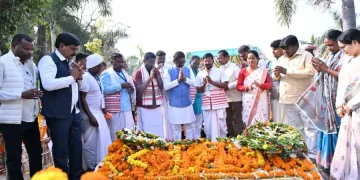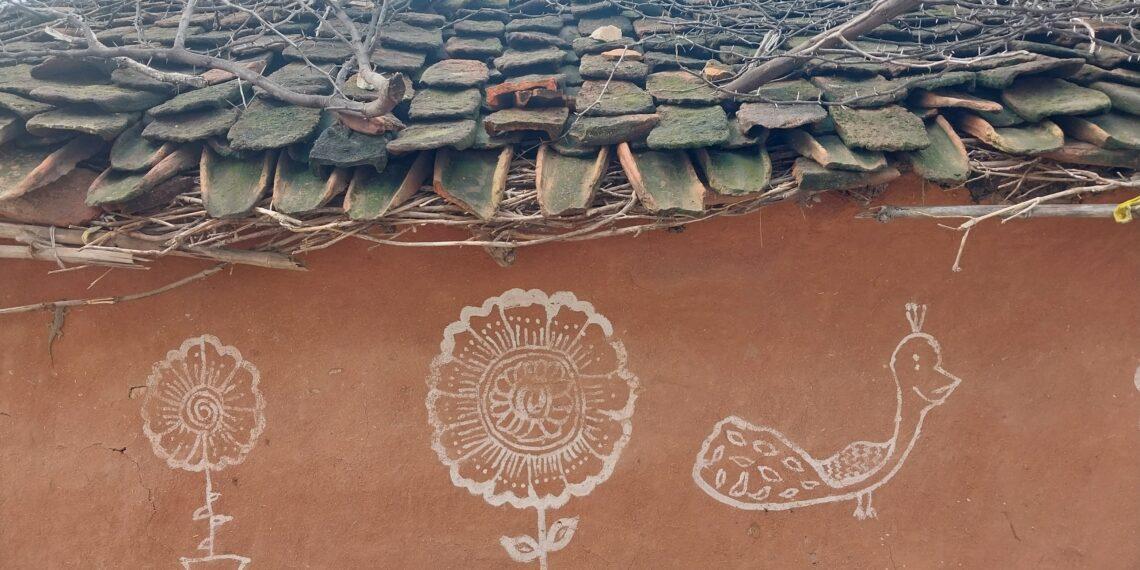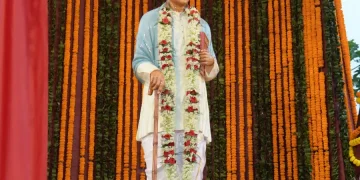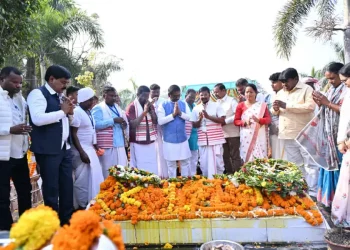Sawai Madhopur
While addressing the nation on 50 years of Project Tiger recently, Prime Minister Narendra Modi remarked that protecting nature has been an integral part of the Indian culture.
Indeed, nature and culture are entwined in India. And this comes alive through the traditional tribal Mandana wall and floor paintings seen across villages in Sawai Madhopur district of Rajasthan.
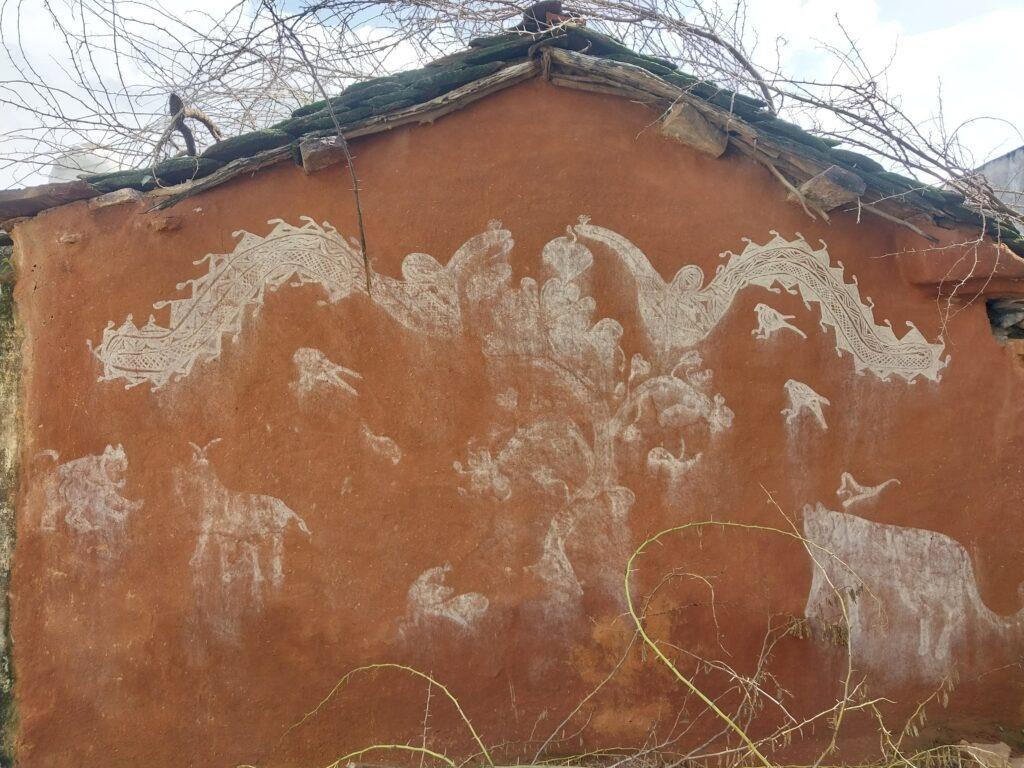
Guide Dhulilal Meena, who took the reporter to the district’s Bandha gram panchayat, said women create beautiful murals of birds, animals and flowers on mud walls.
Traditionally, the paintings are executed with brushes on red-coated mud walls with the help of white chalk soaked in water. Intricate designs are made on the floor as well. These are somewhat circular in shape.
However, the Mandana art is under threat as pucca houses are replacing kuccha houses in the district.
Surendra Kumar, who works in the Sawai Madhopur forest division, said due to the influx of concrete houses in rural areas under the Pradhan Mantri Awas Yojana, the craze for Mandana has come down.
“Many people now feel that kuccha houses need a lot of maintenance as the outer layer has to be smoothed over every year post monsoon. No one has so much time these days. Most are also hooked on to television sets and phones,” Surendra pointed out.
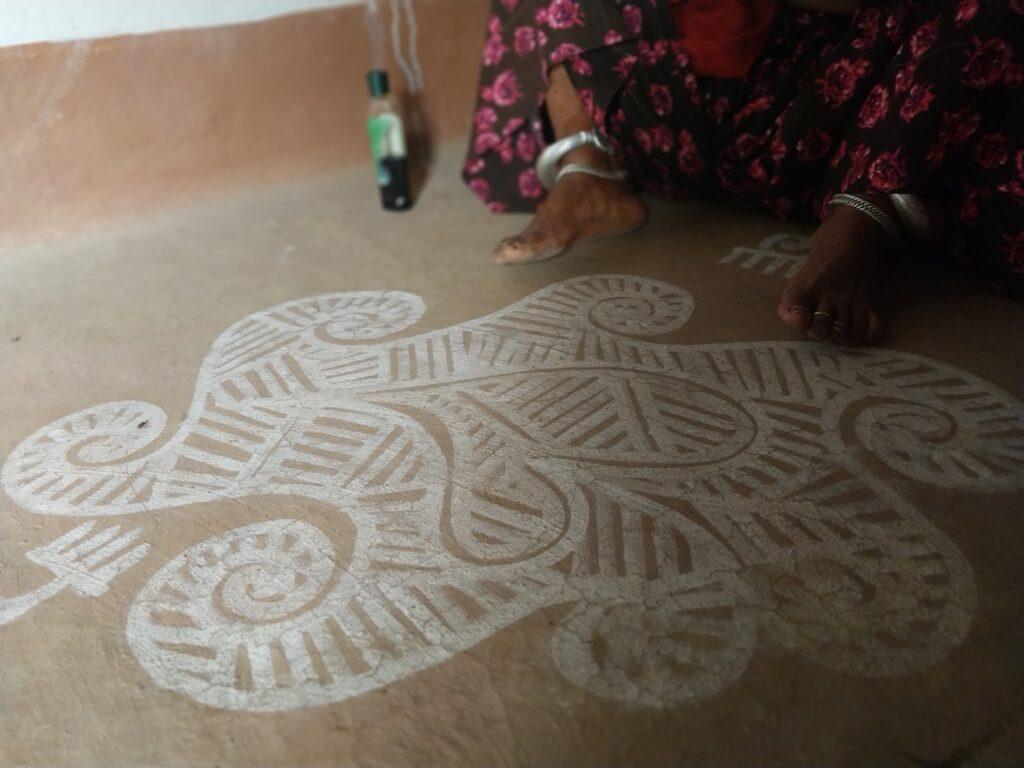
In Bandha, the house of Lakhpat Meena and his wife Jalbai Meena is a treat for the eyes. “There is an effort on our part to make the walls beautiful with Mandana art,” Lakhpat said. Lakhpat’s family is into agriculture, and grows guavas.
Divya Khandal, who runs social enterprise Dhonk in Ranthambore, is promoting the traditional Mandana art of the Ranthamore region famous for its fort and tigers. “The aim is to ensure the local tradition stays alive. There is a need to engage people in arts and crafts or else these will slowly vanish,” she said.
Some of the paintings capture nature in its glory. Animals and birds are common themes, and even tiger murals. This is because people here accept animals as part of their culture.
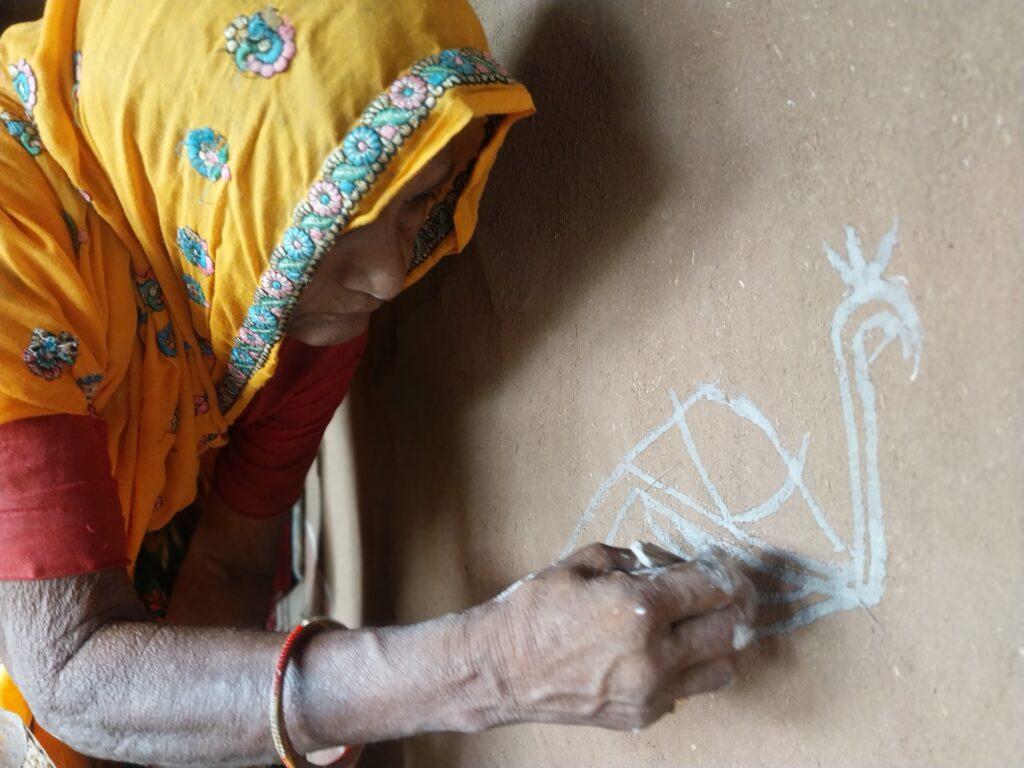
In village Sherpur, guide Kamlesh Kumar Mali showed a house where Mandana paintings were seen on the outer wall. In the village, elderly Ramnawasi Saini and a young schoolgirl Tina Saini painted a wall inside their house in front of the reporter, who also tried her hand at Mandana. When the murals dry up, they become clearer.
Besides the pucca houses, Mandana becoming a dying art slowly is also because the region’s young girls these days are more influenced by mehendi designs and latest social media trends.

